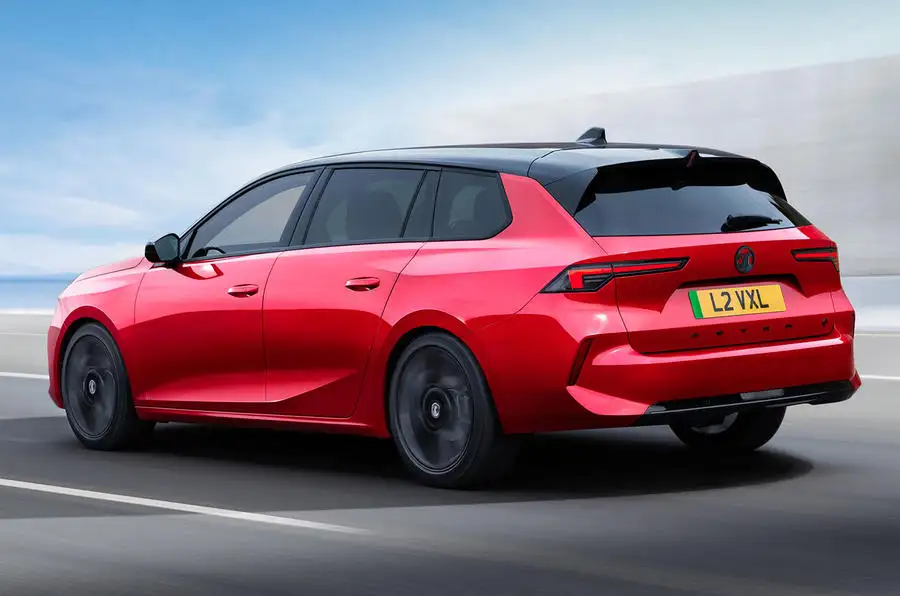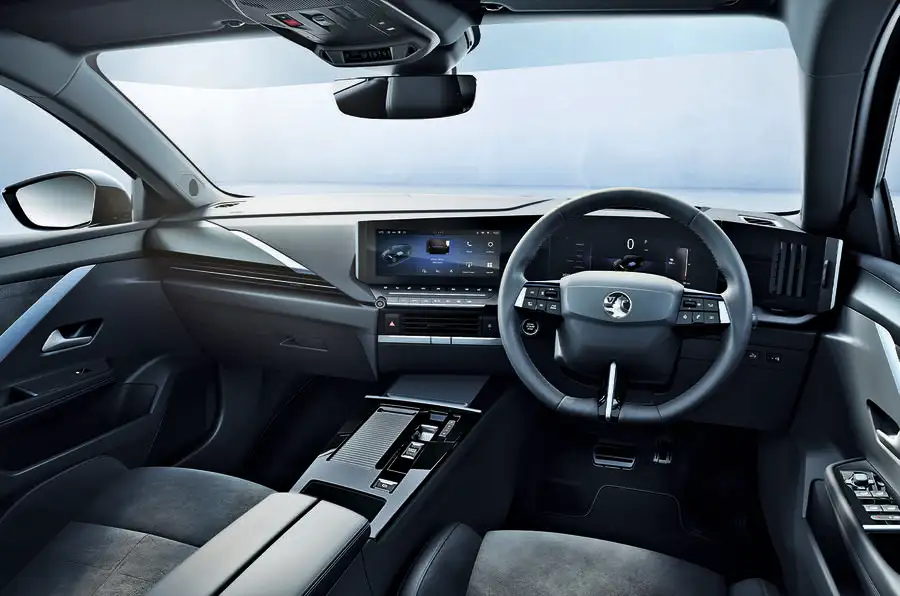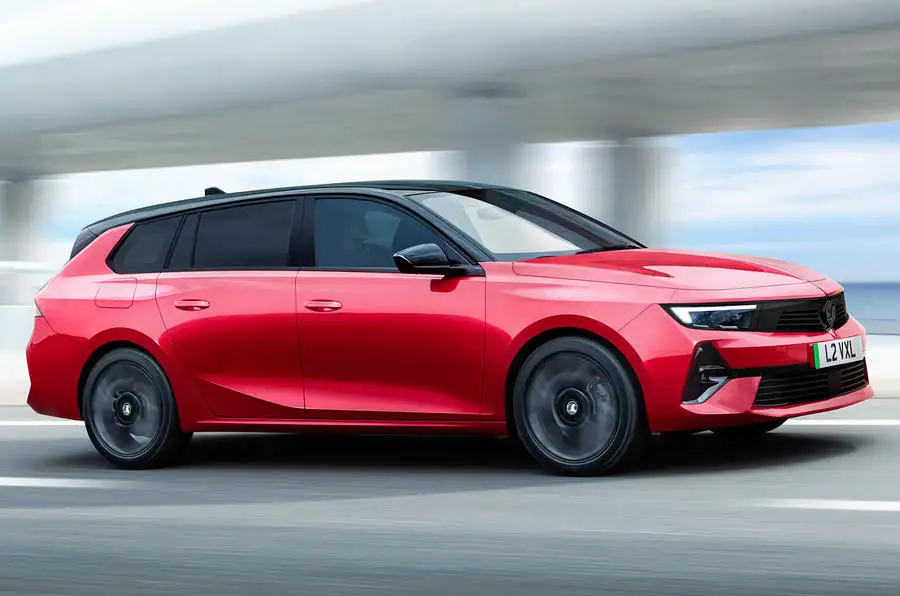Maximized Space Meets Electric Efficiency with a 256-Mile Range
Table of Contents
The Vauxhall Astra Sports Tourer has recently upgraded to an electric version, mirroring its hatchback counterpart with a range of 256 miles on a single charge.
Expanded Capacity for the Vauxhall Astra Sports Tourer
Compared to the standard Astra Electric hatchback, the Vauxhall Astra Sports Tourer’s estate design significantly increases luggage capacity. You’re looking at a jump from 352 litres to a more spacious 516 litres. And with the rear seats folded, that space expands to a whopping 1553 litres.

Under the Hood
Both the estate and hatchback versions share a 54kWh battery and a robust motor, delivering 153bhp and 199lb ft of torque. Vauxhall has focused heavily on efficiency, boasting an impressive 4.2mpkWh.
Charging and Performance
The vehicle supports rapid recharging at rates up to 100kW, meaning you can boost your battery from 20-80% in just 26 minutes. The estate’s performance mirrors that of the hatchback, completing the 0-62mph sprint in 9.2 seconds, with only a minor two-mile range reduction. We think that when you introduce a new model in 2023, the charging speeds should be at least 150KW, Vauxhall has dropped the ball here in our opinion.
Interior Tech
Inside, both models feature a 10.0-inch infotainment touchscreen and an equally sized digital instrument display, offering a seamless and modern driving experience.

Pricing and Trims
The Vauxhall Astra Sports Tourer Electric starts at £39,995 in the entry-level Design trim, slightly pricier than its hatchback sibling. The GS trim, at £42,445, adds stylish black exterior accents, a 360-degree camera, and adaptive cruise control. The top-tier Ultimate trim, priced at £45,505, boasts adaptive headlights and a panoramic sunroof.
Competition and Market Position
The Sports Tourer faces limited competition in the electric estate market, previously dominated by the MG 5 SW EV and recently joined by the Peugeot E-308 SW. However, Vauxhall expects the hatchback version that is competing with the Renault Megane E-Tech to lead in Astra Electric sales.
Vauxhall’s Electric Strategy
James Taylor, Vauxhall UK MD, emphasizes the significance of including an electric Astra in their lineup. Winning in segments with their electric vehicles, Vauxhall aims to capitalize on the larger C-segment EV market. The introduction of popular models like the Astra Sports Tourer in electric form is central to their strategy to lead in EV manufacturing.
In summary, the new Vauxhall Astra Sports Tourer Electric is a significant addition to the brand’s lineup. With its enhanced capacity, efficient performance, and advanced technology, it represents Vauxhall’s commitment to an electric-first future and their ambition to lead in the EV market.
Also Read
- A Sunny Outlook: Wind and Solar Outshine Fossil Fuels in the EU
- Volkswagen’s ID.7 GTX Duo Available in the UK
- Rivian & Volkswagen Alliance Gets German Approval
- Porsche Unveils First Electric Cayenne Prototypes
- Rivian Shares Surge 50% on Volkswagen’s $5 Billion Investment
Frequently Asked Questions
What is the range of the Vauxhall Astra Sports Tourer Electric?
The Vauxhall Astra Sports Tourer Electric offers an impressive range of 256 miles on a single charge, making it a highly efficient choice for both city and longer journeys.
How does the luggage capacity of the Sports Tourer Electric compare to the regular Astra Electric hatchback?
The Sports Tourer Electric significantly increases its luggage space compared to the regular Astra Electric hatchback. It boasts 516 litres of space, which expands to 1553 litres with the rear seats folded down.
What are the key features of the Vauxhall Astra Sports Tourer Electric’s interior?
The interior of the Sports Tourer Electric is equipped with a 10.0-inch infotainment touchscreen and a digital instrument display of the same size, offering a modern and user-friendly driving experience.
How long does it take to charge the Vauxhall Astra Sports Tourer Electric?
The vehicle supports rapid charging at rates up to 100kW. This allows you to charge the battery from 20% to 80% in just 26 minutes, ensuring minimal downtime and maximum efficiency.

